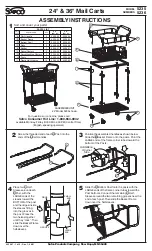
2
of 3 | 13.11.2019
Note:
the battery is not charged sufficiently in case of
longer periods without sunlight so that constant availability for operation cannot be guaranteed.
However, this does not mean that the solar light is defective.
Wait until the sun shines and the light will work again.
4. Commissioning
1. Remove the solar light from the packaging carefully.
2. Observing the safety and warning instructions, place the solar light in the required
position and press the switch. (Remove the lamp/solar panel underside or cover).
3. Choose a suitable place with direct sunlight to charge up for the first time.
Make sure that the sun is shining directly on the solar unit on the solar LED light.
Shade on the solar unit impairs the battery's charging function.
4. The solar LED light is charged using the solar panel on the top.
It automatically switches on at dusk using the day/night sensor.
Make sure that the day/night sensor on the top of the light is not influenced by another source
of light. Otherwise it will not switch the light on at dusk.
5. It is not possible to replace the lamp.
6. The type plate must not be removed.
Note:
the period of light/light intensity heavily depends on the duration and intensity
of the sun's rays during the day. A shorter period of light should generally be expected in winter.
If the light does not illuminate on the first evening, wait for one to two days of sun.
5. Faulty Function
Lamp does not switch on
•
An external source of light (e.g. street light) is simulating daylight and preventing the light from switching
on. Place the light in a darker position
Lamp does not switch on or only briefly at dark.
•
Light switched on?
•
Battery low or defective. Replace the battery
6. Replacing the Batteries
The batteries in solar lights must generally be replaced every 2 years on average.
Please only use the specified battery type for this product.
The use of other batteries can lead to damages.
(Remove the lamp/solar panel underside or cover).






























